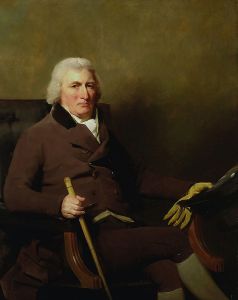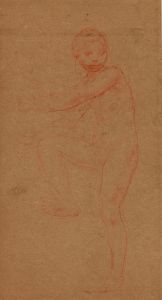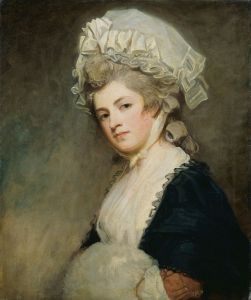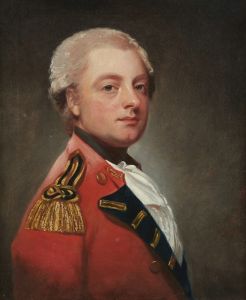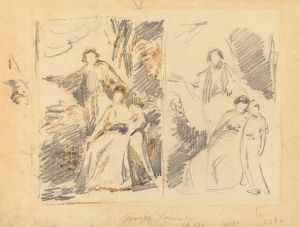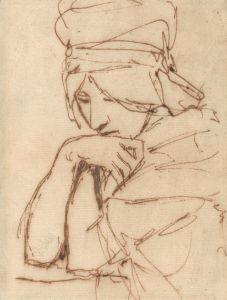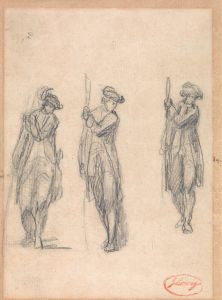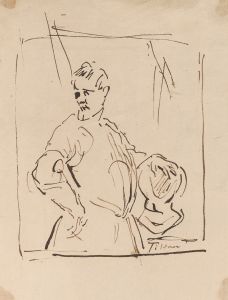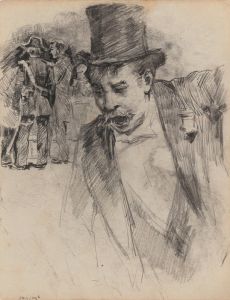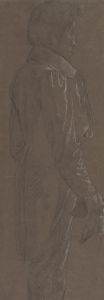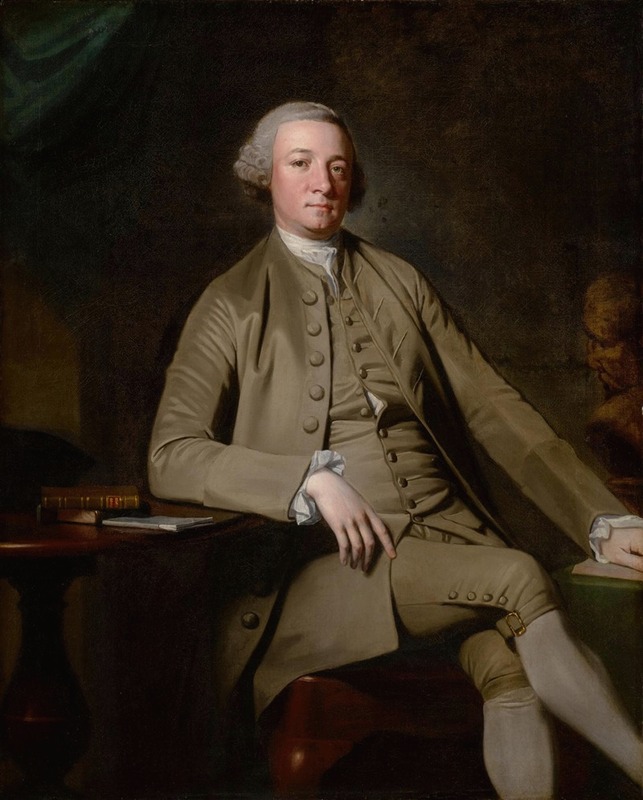
Portrait of a Gentleman, seated, probably William Suddel of Lancaster
A hand-painted replica of George Romney’s masterpiece Portrait of a Gentleman, seated, probably William Suddel of Lancaster, meticulously crafted by professional artists to capture the true essence of the original. Each piece is created with museum-quality canvas and rare mineral pigments, carefully painted by experienced artists with delicate brushstrokes and rich, layered colors to perfectly recreate the texture of the original artwork. Unlike machine-printed reproductions, this hand-painted version brings the painting to life, infused with the artist’s emotions and skill in every stroke. Whether for personal collection or home decoration, it instantly elevates the artistic atmosphere of any space.
"Portrait of a Gentleman, seated, probably William Suddel of Lancaster" is an oil painting by the renowned English artist George Romney. George Romney (1734-1802) was one of the leading portrait painters of his time, celebrated for his ability to capture the character and elegance of his subjects. This particular portrait is believed to depict William Suddel, a gentleman from Lancaster, although definitive identification remains uncertain.
Romney's career flourished in the late 18th century, and he was known for his portraits of prominent figures, including aristocrats, politicians, and members of the emerging middle class. His works are characterized by their refined style, attention to detail, and the subtle use of light and shadow to create depth and realism.
The painting "Portrait of a Gentleman, seated, probably William Suddel of Lancaster" exemplifies Romney's skill in portraying the genteel and dignified nature of his sitters. The gentleman in the portrait is seated, exuding a sense of calm and poise. The composition is balanced, with the subject positioned slightly off-center, allowing for a natural and relaxed pose. The background is typically understated, ensuring that the focus remains on the sitter.
Romney's technique involved a meticulous approach to capturing the textures of clothing and the nuances of facial expressions. In this portrait, the gentleman's attire is rendered with great precision, highlighting the luxurious fabrics and the fashionable style of the period. The subtle play of light on the subject's face and hands adds a lifelike quality to the painting, showcasing Romney's mastery in creating a three-dimensional effect on a two-dimensional surface.
The identity of the sitter, believed to be William Suddel, adds an element of historical interest to the painting. William Suddel was a figure associated with Lancaster, a city in the northwest of England. However, due to the lack of concrete evidence, the identification remains speculative. Despite this uncertainty, the portrait remains a valuable example of Romney's work and provides insight into the fashion, demeanor, and social status of gentlemen during the late 18th century.
George Romney's portraits are held in high regard and can be found in numerous prestigious collections, including the National Portrait Gallery in London and various other museums and private collections around the world. His legacy as a portraitist is marked by his ability to convey the personality and status of his subjects with elegance and sophistication.
In summary, "Portrait of a Gentleman, seated, probably William Suddel of Lancaster" is a testament to George Romney's artistic prowess and his contribution to the genre of portrait painting. The painting captures the essence of a gentleman from the 18th century, reflecting the social and cultural milieu of the time. While the exact identity of the sitter may remain uncertain, the portrait continues to be appreciated for its artistic merit and historical significance.






